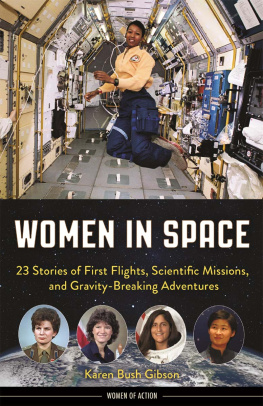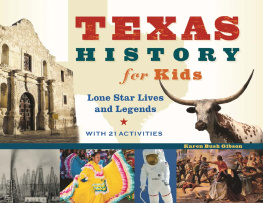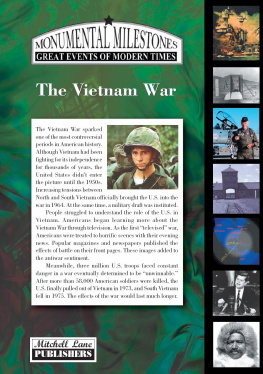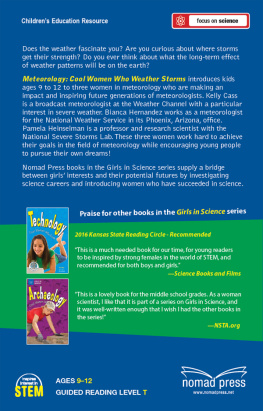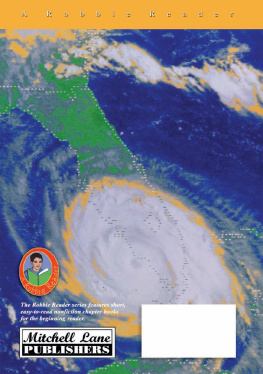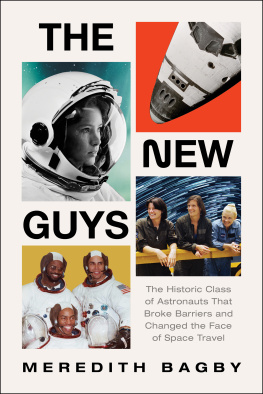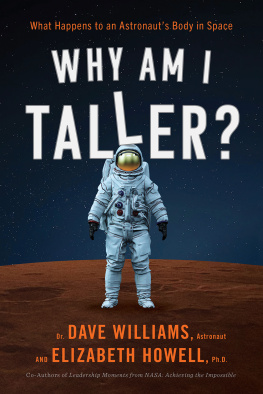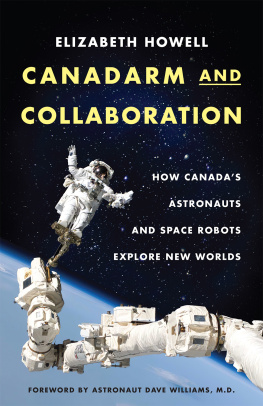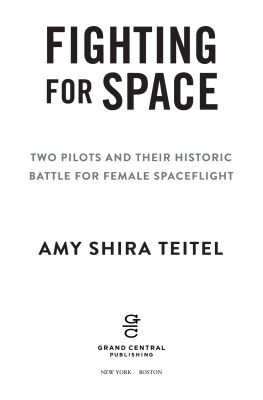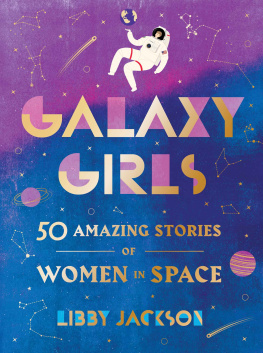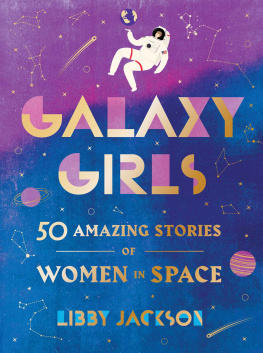W hen Valentina Tereshkova blasted off aboard Vostok 6 on June 16, 1963, she became the first woman to rocket into space. It would be 19 years before another woman got a chancecosmonaut Svetlana Savitskaya in 1982followed by American astronaut Sally Ride a year later. By breaking the stratospheric ceiling, these women forged a path for many female astronauts, cosmonauts, and mission specialists to follow.
Women in Space profiles 23 pioneers, including Eileen Collins, the first woman to command the space shuttle; Peggy Whitson, who logged more than a year in orbit aboard the International Space Station; and Mae Jemison, the first African American woman in space; as well as astronauts from Japan, Canada, Italy, South Korea, France, and more. Readers will also learn about the Mercury 13, American women selected by NASA in the late 1950s to train for spaceflight. Though they matched and sometimes surpassed their male counterparts in performance, they were ultimately denied the opportunity to head out to the launching pad. Their story, and the stories of the pilots, physicists, and doctors who followed them, demonstrate the vital role women have played in the quest for scientific understanding.
Copyright 2014 by Karen Bush Gibson
All rights reserved
Published by Chicago Review Press Incorporated
814 North Franklin Street
Chicago, Illinois 60610
ISBN 978-1-61374-844-2
Library of Congress Cataloging-in-Publication Data
Gibson, Karen Bush.
Women in space : 23 stories of first flights, scientific missions, and gravity-breaking adventures / Karen Bush Gibson.
pages cm
Audience: 12+
Includes bibliographical references and index.
ISBN 978-1-61374-844-2 (cloth)
1. Women astronauts--BiographyJuvenile literature. 2. Women in astronauticsJuvenile literature. I. Title.
TL793.G457 2014
629.45009252--dc23
2013024950
Interior design: Sarah Olson
Printed in the United States of America
5 4 3 2 1
To Justus, whose curiosity about space and life knows no boundaries.
CONTENTS

Index

INTRODUCTION

W orld War II was largely fought and won in the skies with airplanes that flew faster and did more things than ever before. Coming forward as winners from World War II, a modern America began to emerge. A new kind of hero emerged as wella hero willing to sacrifice self to explore new frontiers. Like the cowboys and pioneers before them, these new heroes had a certain swagger that came from being larger than life. But instead of a ten-gallon hat, the hero wore a space helmet. And like the heroes portrayed in the history books, these new heroes were men.
Astronauts. The first astronauts, those chosen few, experienced what once was only found in science fiction books. Being shot into outer space. Flying in space ships. Going to the moon.
Men made those first journeys. Not that there werent capable womenthere were. American society just wasnt ready or at least those who made the decisions werent ready. The attitude was that women were to be protected and taken care of, concepts that contradicted becoming astronauts.
The Space Race began soon after the Allies won World War II. America and the former Soviet Union inherited and made use of German technology, specifically rocket technology. Although the two countries had fought on the same side during World War II, their relationship deteriorated in the years afterward. The United States embraced democracy, while the Soviet Union was ruled by communism. Each side possessed nuclear weapons. Though no open battles took place, the United States and the Soviet Union were engaged in a cold war.
Both sides were convinced that their form of government was best. A competition of sorts developed, and the biggest contest was the Space Race. The Soviet Union won the race to be first in space on October 4, 1957, when Sputnik I was launched. Weighing in at 184 pounds, Sputnik I looked like a metal beach ball with four legs. It orbited the Earth for 98 minutes. Almost a month later, Sputnik II went into space carrying a passengera dog.
Launching a satellite was something the United States had been working on without much success. One effort exploded on the launch pad. The Soviets success spurred the United States on, and America had its first success on January 31, 1958. Explorer I was launched with a scientific unit that discovered the magnetic radiation belts around the Earth, later known as the Van Allen belts.
The Explorer and Sputnik programs continued with scientific exploration, although both the United States and the Soviet Union still had the occasional failure. Six months after the first Explorer satellite, the US Congress passed the National Aeronautics and Space Act to provide for research into problems of flight within and outside the earths atmosphere and for other purposes.
Initially, the US Department of Defense oversaw space matters, but President Eisenhower saw the need for a civilian space agency. Many people voiced the opinion that space exploration wasnt a military matter but a scientific one. The National Aeronautics and Space AdministrationNASAwas born.
Everyone knew that the next step was putting a person into space. NASA established the Mercury project to reach that goal. President Eisenhower, a five-star army general, decided that astronaut candidates should be selected from a pool of military test pilots. NASA began looking for experienced test pilots with approximately 1,500 hours of flight experience. Hundreds were screened. Groups underwent some of the testing at the Lovelace Medical Clinic and Wright-Patterson Air Force Base.
NASA considered a pilots strong record of flight experience to be very important. Unlike early Soviet space capsules, which were automated, American spacecraft required experienced pilots at the controls in case of malfunctions. Not having an experienced pilot would have meant death in more than one occasion on the Mercury, Gemini, and Apollo missions.
At a press conference on April 9, 1959, NASA introduced the seven American men who were ready to go into space: Scott Carpenter, Gordon Cooper, John Glenn, Gus Grissom, Walter Schirra, Alan Shepard Jr., and Deke Slayton. With luck, one of them would be the first man in space.
But before that could happen, the Soviets launched Vostok 1 on April 12, 1961, and Russian cosmonaut Yuri Gagarin became the first person in space. Alan Shepard Jr. followed less than a month later in Freedom 7. In the Space Race, the Soviets were still winning.
In the early days of space travel, one consideration in choosing astronauts was weight. Capsule weight, astronaut weight, payload weighteach pound required more fuel, and the fuel added weight as well. Each pound to be launched required three pounds of propellant. Some scientists speculated that more could be done with a lighter load. A woman astronaut would contribute less weight to the capsule, and perhaps this was one contest the United States could win.
When the space program began, women in the United States couldnt get credit cards, rent cars, or obtain loans to buy houses. You didnt see female police officers or professional athletes. When you turned on the television, only male newscasters delivered the nightly news. In the late 1950s, a woman often went from her parents home to a home with her husband. Some stopped off at college along the way, mainly womens colleges or the few co-ed public colleges that existed. Many private colleges didnt admit women until the 1970s. Princeton and Yale went co-ed in 1969. Dartmouth and Duke allowed women in 1972. Harvard waited until 1977, while Columbia held out until 1983. Today, more than half of college students accepted in any program of higher education are women.
Next page
